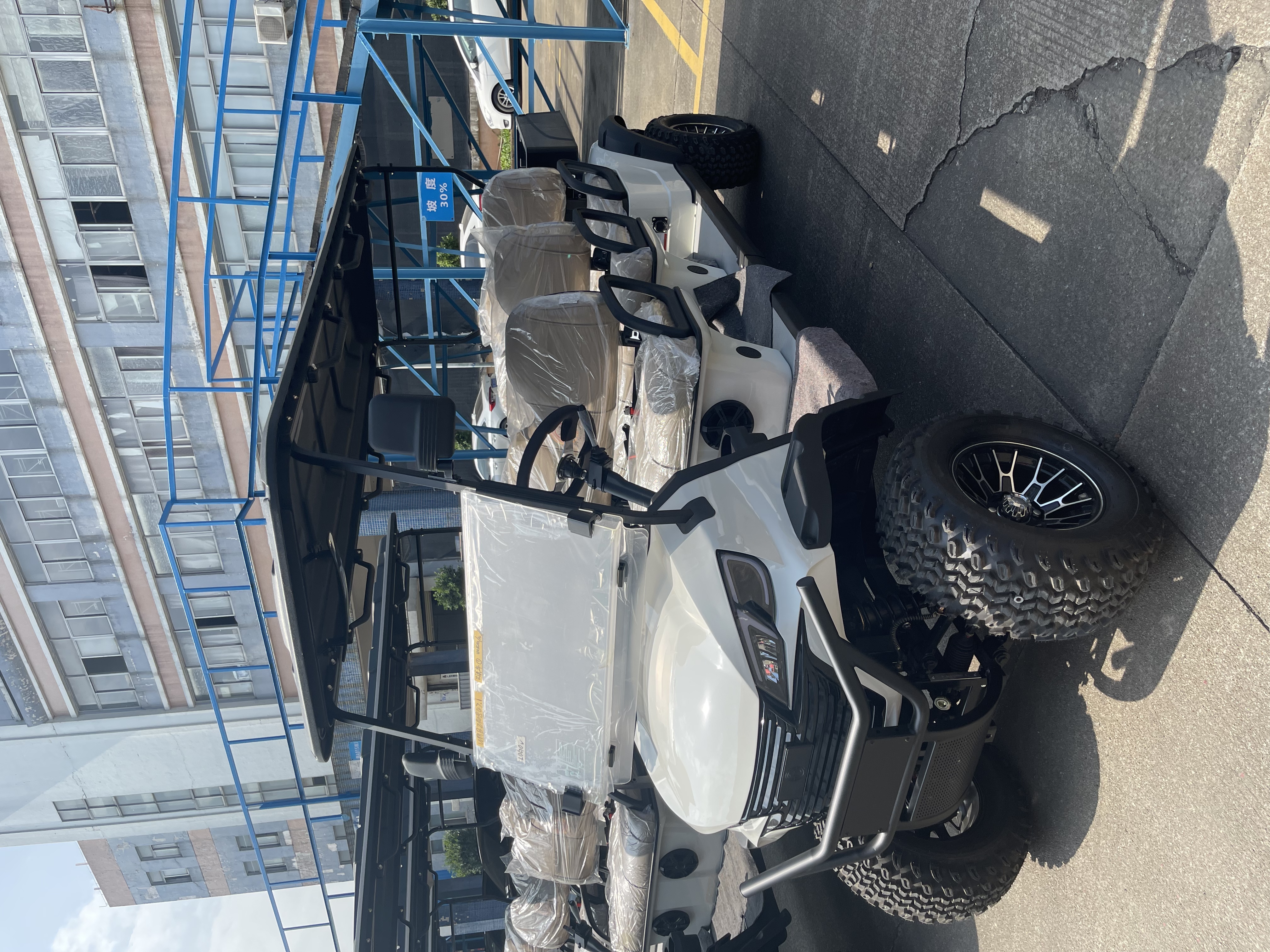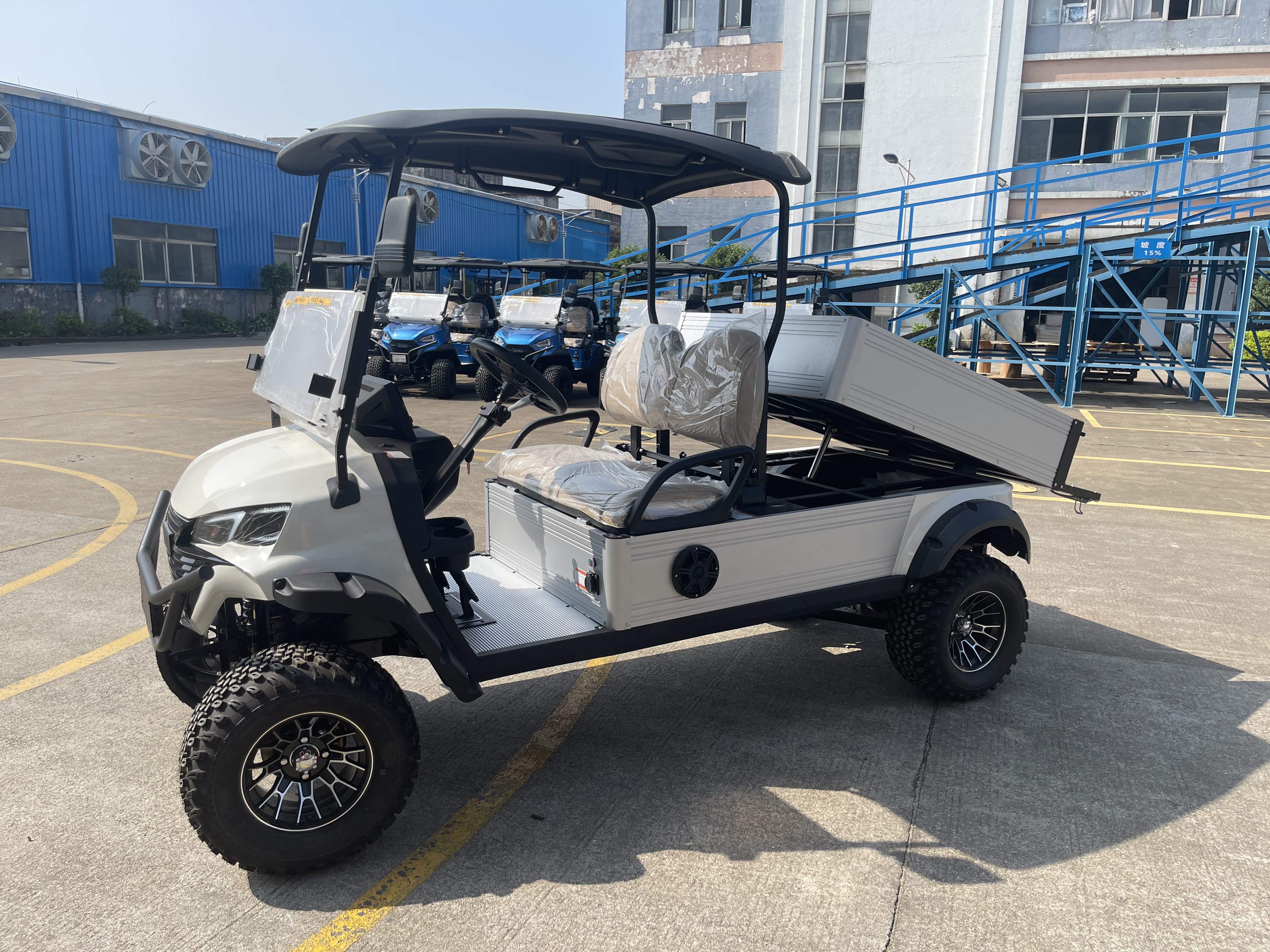Golf carts for the hotel and tourism
The application of golf carts in the hotel field has broken through the traditional scene and become an innovative tool to improve service efficiency and guest experience. The following is a typical use and value analysis:
1. Guest transfer service
Scene: In a large resort, convention center or scenic hotel, guests need to shuttle between rooms, restaurants, SPA, golf course and other facilities.
Advantages:
Convenience: Instead of walking or traditional ferries, it is especially suitable for short-distance high-frequency pick-up (such as picking up to the restaurant on rainy days).
Privacy: Exclusive transport for VIP guests to enhance the sense of dignity.
Flexibility: Quick response to temporary needs (e.g., emergency medicine delivery, transportation of guests with limited mobility).
2. Luggage and supplies transportation
Scenario: Transporting luggage from the parking lot/lobby to the guest room, or transporting event equipment to the banquet hall.
Advantages:
Efficiency: The electric golf cart is quiet and environmentally friendly, suitable for all-weather operation, reducing labor costs.
Multi-functional modification: Add shelves or incubators to achieve point-to-point distribution of food and beverage, linen and other materials.
3. Scenario-based experience tools
Case:
Night tour: Equipped with LED light strips and explanatory equipment, guests can tour the gardens or historic buildings.
Wedding reception: Decorated in a themed style (such as a vintage carriage) for the bride’s entrance or guests’ ferry.
Family activities: Design a “scavenger hunt” route where families can explore the hotel and complete missions by car.
4. Greening maintenance and emergency response
Maintenance: Equipped with pruning tools or cleaning equipment, quickly deal with weeds and fallen leaves in public areas.
Emergency: as a temporary fire patrol vehicle, medical emergency vehicle, or a rapid evacuation tool in disaster weather.
5. Brand image upgrade
Customized design: The car body is sprayed with the hotel LOGO, the seat is engraved with the brand slogan, and the visual identification is strengthened.
Technology integration: Add flat navigation and air detection modules to create a “smart travel” experience.
6. Environmental protection and cost effectiveness
Economy: The electric model has low charging cost, simple maintenance, and is suitable for high-frequency short-distance operations.
Compliance: Low-speed vehicles (usually ≤30km/h) do not need a special driver’s license, reducing the threshold of manpower.
Actual case reference
A resort hotel in Haitang Bay, Sanya: 10 modified golf carts, equipped with awnings and USB charging interface, picked up more than 200 guests per day, and parent-child family satisfaction increased by 40% in summer.
Qiandao Lake Anlu Hotel: The use of cart series 38 villas and lakeview restaurant, combined with the water connection to form a “double cycle of water and land” moving line, has become a characteristic experience label.
Challenge and optimization direction
Regulatory adaptation: It is necessary to confirm the local license plate and right-of-way policy for low-speed electric vehicles.
Dynamic line design: plan dedicated lanes to avoid crossing with people flow, and set up intelligent scheduling system to improve utilization.
Seasonal management: Cold areas need to consider winter battery life, or have seasonal storage solutions.
Through scene digging and technological innovation, golf carts are being upgraded from “functional tools” to “experience carriers” to help the hotel build a differentiated service ecosystem.
Post time: Mar-28-2025










